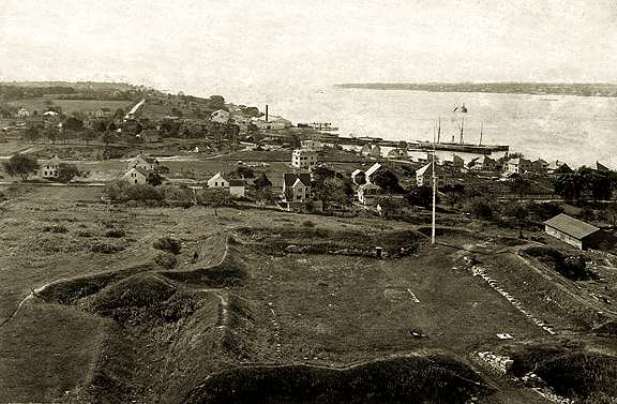Last Updated: March 12, 2025
East of the Thames River, on Groton Heights, Fort Griswold stands commanding the New London Harbor and the surrounding countryside. During the Revolutionary War, British forces attacked New London and burned the city on September 6, 1781. Across the river, British forces also attacked Fort Griswold during the Battle of Groton Heights.
Battle of Groton Heights
As it became less likely that the British would win the Revolutionary War, they decided to target New London as a port of strategic importance to divert American resources away from Virginia and retaliate against New London’s privateering practice. General Benedict Arnold—a former Continental Army officer from Norwich who switched his allegiance to Britain—commanded the British troops during the raid of New London and the Battle of Groton Heights. A section of the British army, under the command of Colonel Edmund Eyre, targeted Fort Griswold, where approximately 150 colonial militia and local men were under the command of Colonel William Ledyard.
After some fighting, the British gained the advantage and entered the garrison. Once the British had penetrated the fort itself, Ledyard ordered his men to stop fighting and surrender to avoid further casualties. With confusion on both sides, however, the British continued to shoot.
British and American accounts of the battle conflict. According to the Americans, British troops massacred surrendering wounded American soldiers while British accounts make no mention of it. The British killed William Ledyard, but it is uncertain whether he was slain with his own sword after surrendering it to a British officer or killed with a bayonet. The entire battle only lasted 40 minutes.
A month and a half later, on October 19, 1781, British General Lord Cornwallis formally surrendered to American General George Washington in Yorktown, Virginia. The burning of New London and the Battle of Groton Heights was the last significant land battle in the northeast during the Revolutionary War. The fort was rebuilt and later used in defense preparations for at least four other wars. The original garrison is now the Fort Griswold Battlefield State Park.
This article was partly adapted using content from the Imagining Connecticut exhibit that formerly hung in the Connecticut State Capitol and Legislative Office Building starting in 2000.
This article has been updated, learn more about content updating on ConnecticutHistory.org here.









